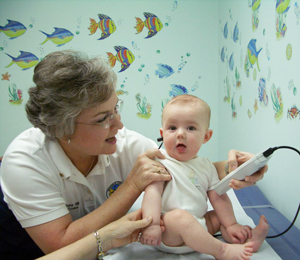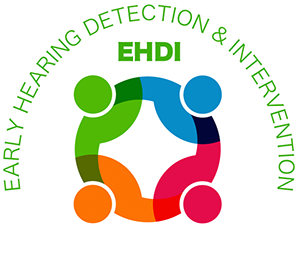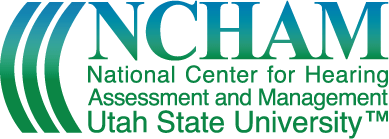Last Modified: 06/14/2023
Medical Home

Several years ago, the American Academy of Pediatrics (AAP) and the Maternal and Child Health Bureau of the U.S. Department of Health and Human Resources began promoting the concept that every child in America should have a medical home. The AAP defines a medical home as the following [PDF]:
A medical home is an approach to providing comprehensive primary care that facilitates partnership between patients, physicians, and families. The American Academy of Pediatrics (AAP) believes that every child deserves a medical home, where care is accessible, continuous, comprehensive, patient- and family-centered, coordinated, compassionate, and culturally effective. Over the past year the AAP has been at the forefront of numerous initiatives to promote the adoption and spread of the patient- and family-centered medical home.
In the pediatric population, a medical home should include:
- Patient- and family-centered partnership: A medical home provides patient- and family-centered care through a trusting, collaborative, working partnership with families, respecting their diversity, and recognizing that they are the constant in a child’s life.
- Community-based system: The medical home is an integral part of the community-based system, a patient- and family-centered coordinated network of community-based services designed to promote the healthy development and well being of children and their families. As such, the medical home works with a coordinated team, provides ongoing primary care, and facilitates access to and coordinates with, a broad range of specialty, ancillary, and related community services.
- Transitions: The goal of transitions is to optimize life-long health and well-being and potential through the provision of high-quality, developmentally appropriate, health care services that continue uninterrupted as the individual moves along and within systems of services and from adolescence to adulthood.
- Value: Recognizing the importance of quality health care, appropriate payment for medical home activities is imperative. A high-performance health care system requires appropriate financing to support and sustain medical homes that promote system-wide quality care with optimal health outcomes, family satisfaction, and cost efficiency.
In March 2007, the AAP joined with the American Academy of Family Physicians (AAFP), American College of Physicians (ACP), and the American Osteopathic Association (AOA) to publish the Joint Principles of the Patient-Centered Medical Home [PDF]. This consensus statement describes seven principles of a medical home, which include: personal physician, physician-directed medical practice, whole-person orientation, coordinated care, quality and safety, enhanced access, and appropriate payment.
The Medical Home and EHDI
- The medical home plays a key role in supporting EHDI systems. Since 2001, the American Academy of Pediatrics (AAP) implemented a program, Improving the Effectiveness of Newborn Hearing Screening, Diagnosis, and Intervention through the Medical Home.
- The Medical Home Portal is a web-based tool that provides valuable information for pediatricians and families about serving children with special needs. The unit on hearing loss and deafness provides information about etiology, diagnosis, specialty care, and resources.
- Meeting the Needs of Physicians in Support of EHDI [PDF]
- This presentation features results from a survey conducted with physicians in 26 states, tying the results to the value of implementing recommended practices from the AAP along with Boys Town efforts.
Links to Additional Medical Home information
National Center for Medical Home Implementation (NCMHI) Resources Medical Home Interview Videos
- Why is Family-Centered Care Essential?
- What is Collaborative Care and Does it Advance High Quality Outcomes
- What is Family-Centered Care and What Does it Look Like in a Medical Home?
Pediatric Medical Home Implementation Resource Tutorials
Tutorials Include:
- Building Your Medical Home: An Introduction to Pediatric Primary Care Transformation
- National Center for Medical Home Implementation Web site
- Pediatric Medical Home State-Based Resources
AAP EHDI Chapter Champions
Each American Academy of Pediatrics (AAP) Chapter has identified at least one pediatrician member to serve as the EHDI Chapter Champion. This individual is responsible for leading and responding to health care provider concerns regarding newborn hearing screening in the state. They are also involved in working with their state department of human services/department of public health staff and other in state government agencies as well as other pediatric health care providers in the state on EHDI programs and activities.
AAP Fact Sheets and Other Resources from the AAP Task Force on Improving Newborn Hearing Screening, Diagnosis, and Intervention

The following resources and more information can be found at the AAP website (posted here with permission).
- Webinar Recording: Early Hearing Detection & Intervention: AAP Tools for Medical Home Providers to Address Lost to Follow-Up/Documentation (LTF/D)
- Guidelines for Rescreening in the Medical Home Following a ‘Do Notpass’ Newborn Hearing Screening [PDF]
- Guidance for infants who do not pass their initial hospital-based screening and for whom rescreening of hearing is being performed in the medical office rather than rescreening by the hospital-based or audiology outpatient programs is delineated.
- Newborn Hearing Screening: Lost to Documented Follow-Up Considerations for the Medical Home [PDF]
- Primary care medical home providers play an important role in ensuring that timely follow-up and the appropriate documentation ofthat follow-up occur. Considerations in implementing this responsibility are provided.
- Reducing Loss to Follow-Up/Documentation in Newborn Hearing Screening: Guidelines for Medical Home Providers [PDF]
- This Algorithm provides a visual decision making platform for primary care providers.
- The 1-3-6 Hearing Screening Checklist [PDF]
- This handy tool for monitoring patient status in the hearing screening, rescreening, diagnostic, and early intervention process can be integrated into patient charts to facilitate monitoring and needed follow up.
- Common EHDI Definitions [PDF]
- A reference for understanding key terminology pertaining to EHDI, along with risk factors pertaining to hearing loss is provided.
- How Medical and Other Health Professionals Can Help Increase the Number of Infants Who Return for a Follow-up Evaluation [PDF]
- AAP Periodicity Schedule [PDF]
- Bright Futures: Guidelines for Health Supervision of Infants, Children, and Adolescents, Third Edition
Family Voices (FV)
- Family to Family Health Information Centers (F2F HICs)
- Family-Centered Care Self-Assessment: Provider Tool
Institute for Patient- and Family-Centered Care
- Patient- and Family-Centered Ambulatory Care: A Checklist [PDF]
- Advancing the Practice of Patient- and Family-Centered Care in Primary Care and Other Ambulatory Settings: How to Get Started... [PDF]
- Creating Patient and Family Advisory Councils [PDF]
Task Force on Improving the Effectiveness of Newborn Hearing Screening, Diagnosis and Intervention
The EHDI Task Force on Newborn and Infant Hearing has developed educational materials for both professional and public audiences:
- Early Hearing Detection and Intervention (EHDI) Guidelines for Pediatric Medical Home Providers [PDF]: The easy-to-follow flowchart can serve as guidelines for pediatric primary care providers and others involved in the medical care of infants and young children and their hearing health.
EHDI E-mail Express
The EHDI E-mail Express is a monthly e-newsletter from the AAP Improving the Effectiveness of Newborn Hearing Screening, Diagnosis and Intervention through the Medical Home project. It is designed to provide AAP EHDI Chapter Champions and EHDI stakeholders with resources and current clinical and other relevant information. Contact Faiza Khan, if you would like to subscribe.
EHDI E-Book
Details the Importance of Appropriate & Timely Screening, Diagnosis, Management & Follow-up.
Additional resources
- Early Hearing Detection and Intervention Quality Improvement Toolkit
- Just in Time for Pediatric Care Professionals, Early Hearing Detection and Intervention from CDC [PDF]
- PediaLink Course: EQIPP: Newborn Screening: Evaluate and Improve Your Practice (An Updated version of Childhood Hearing: A Sound Foundation in the Medical Home, will be available this spring)
- Joint Committee on Infant Hearing
- What in the world is a health home?
- This document provides information about a "health home," a construct that reinforces the medical home principles.
- Positioning the Family and Patient at the Center: A Guide to Family and Patient Partnership in the Medical Home [PDF]
- For additional information on medical home, please visit the National Center for Medical Home Implementation.


